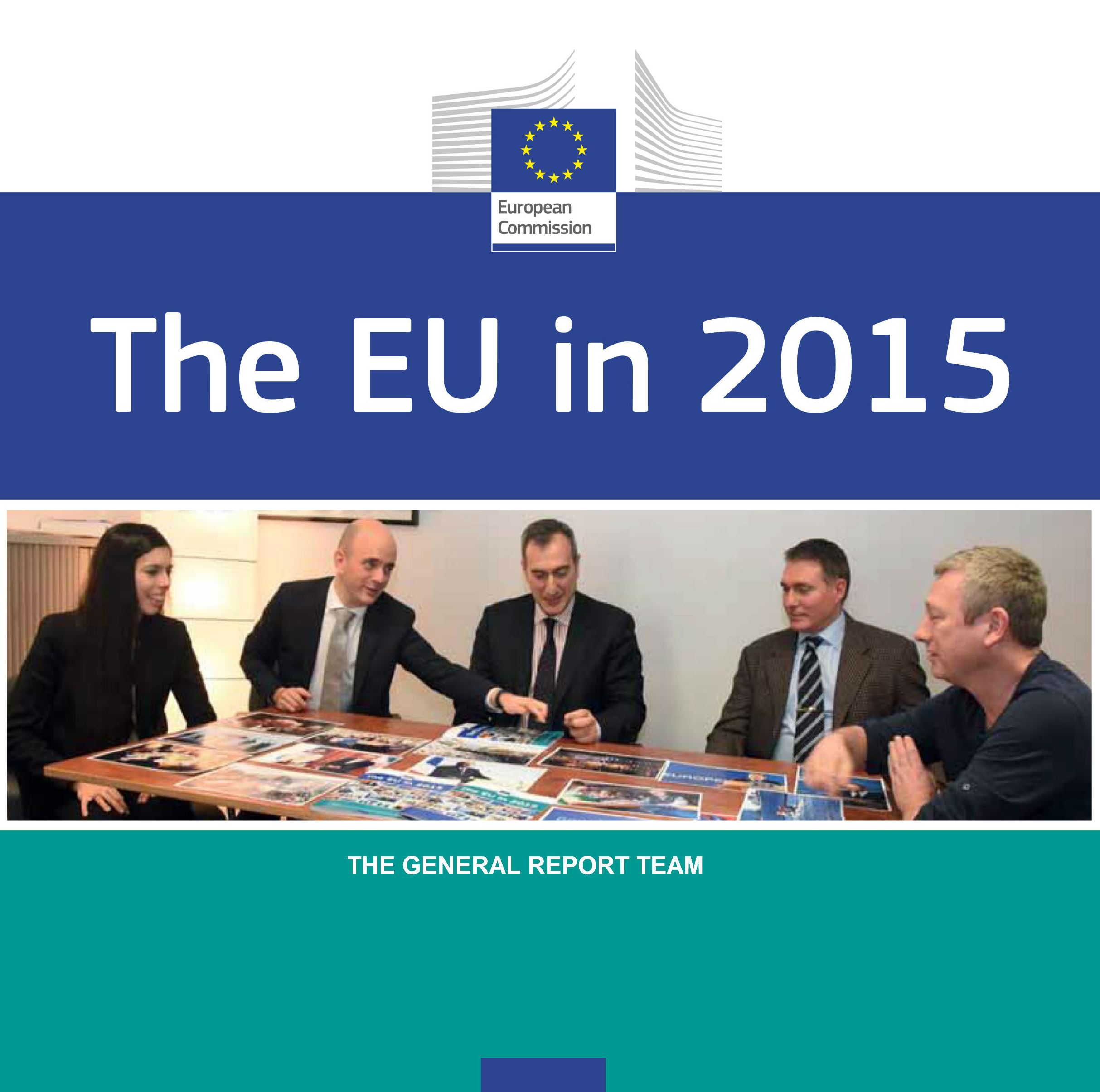Transforming the General Report –Breathing new life into a venerable publication

date: 10/03/2016
The General Report has been around since the dawn of the EU. The Treaty of Rome created the obligation for the Commission to publish a general report and submit it to the European Parliament. It has been published annually ever since.
The 2015 Report covers the first full year of the new Commission. It is shorter, more citizen-friendly and more interactive, and focuses on the EU’s progress in delivering on the ten political priorities.
A shorter, more focused report
In my previous role as Head of Communication for the European Ombudsman, I had overseen the reduction of the annual report’s length from over 300 pages to fewer than 40. To achieve a significant reduction in the length of the EU’s report would be a far bigger challenge, given the greater variety and complexity of issues to be covered. Upon arriving in the Commission in July, I launched straight into coordinating the project. The support and guidance from my hierarchy, and in particular from my Director, Viviane Hoffmann, was invaluable as the project progressed.
The first priority was to change our way of drafting the report. For the first time, contributors from several DGs worked together, with one DG taking the lead, in drafting each chapter. The contributors did an excellent job in focusing on the key developments, while the coordinators successfully brought the contributions together to form each chapter. Xabier Atutxa, who coordinated the six previous General Reports, was impressed by this new way of working: “The quality of the contributions received was high, thanks to the teamwork and professionalism of all the DGs involved.”
Back at DG COMM, we edited the texts received, shortening them wherever necessary, and introducing a coherent drafting style. Former spokesperson Joe Hennon’s expertise was crucial within our team: “Structuring the report around the ten priorities made it easier to determine what should go in and how to present it,” he recalls.
Accompanying the report for the first time is a 16-page highlights brochure. One page is dedicated to each of the ten priorities, summarising key developments in fewer than 250 words. The highlights brochure will make it easier to communicate the EU’s achievements to citizens throughout Europe. Representations and Europe Direct Information Centres have already pre-ordered over 50,000 copies.
Throughout the project, we worked closely with our fantastic colleagues in the Publications Office and in DGT, whose expertise and dedication are instrumental to the success of every publication we produce.
A dynamic, more interactive report
The previous reports were ideal reference sources for EU experts and future historians. But to hold the attention of the less informed or more casual reader, we needed to find a way to liven up the content. By asking all contributing DGs to propose photos, infographics and videos, and by carrying out our own extensive searches, we were able to ensure that almost every page of the report contains audiovisual content. The graphic designers at the Publications Office then developed a clear and attractive design for both publications. Much of the search for photos and videos was undertaken by our Blue Book trainee, Jania Silva: “The other trainees were a bit surprised when I started spending my days searching for photos of Commissioners. I’m delighted that so many of the photos I proposed made it into the final report.”
A major boost to the General Report project was the arrival of our new Head of Unit, Ierotheos Papadopoulos, in September. The experience and contacts from his previous role in the Audiovisual Services Unit proved invaluable as the project progressed. Our colleagues in audiovisual transformed our proposal for a collage of images on the cover into a visual representation of the key moments of 2015.
Although demand remains high for the print version of both the report and the highlights, the videos will of course only be directly accessible in the electronic versions. The 300 links to on-line content contained in the PDF, eBook and HTML versions will enable those who want to read more about any topic to do so with one simple click. So there will still be plenty for EU experts and future historians to get their teeth into.
What has changed?
• At just 92 pages, the length of the report has been reduced by two-thirds.
• The report is structured around the ten political priorities.
• The report contains photos, videos and infographics on almost every page.
• Around 300 hyperlinks have been added to the electronic versions of the report.
• A 16-page highlights brochure is being published for the first time.
• The report continues to fulfil a Treaty obligation, but has also become a genuine communication tool.
Now it’s your turn
The General Report and highlights brochure were both launched on 9 March (see link below). Please help us communicate the EU’s achievements in 2015 by sharing the publications with your network.
http://europa.eu/general-report/en
NB – This article was published in the March 2016 issue of "Commission en direct", the European Commission's internal magazine. The full magazine is available as a PDF download at: http://bookshop.europa.eu/en/commission-en-direct-pbKTAA16002/
